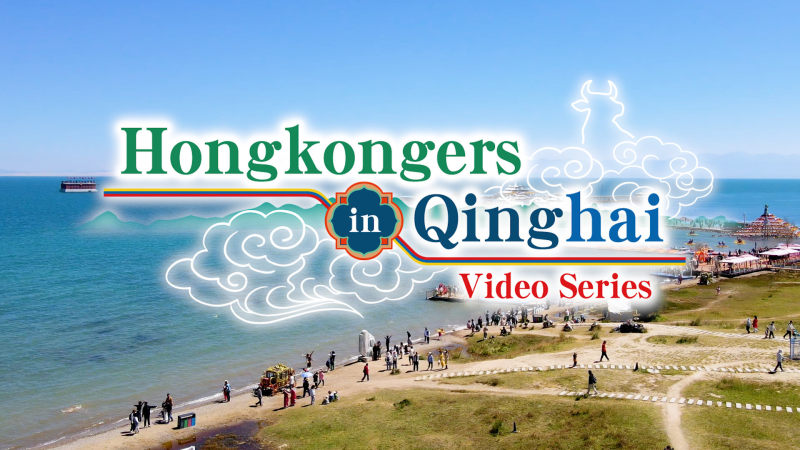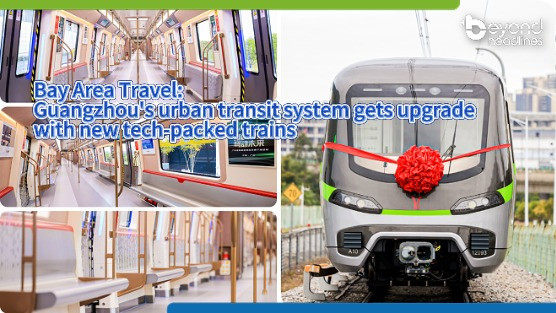After attending China’s highest level meetings - the ‘Two Sessions’, CY Leung, Vice-Chairman of the National Committee of the CPPCC, shares his insights on how to connect Hong Kong and other cities of GBA by enhanced transportation policies and by GBA cards, and on what Hong Kong can do to facilitate people-to-people connectivity with Belt and Road countries.
Q. The Greater Bay Area Development plan was promulgated 5 years ago. What would be the most important accomplishment? And any suggestions regarding the future development of GBA?
CY Leung:In those 5 years, we were affected, in 2019, by riots in the streets of Hong Kong. And that was closely followed by 3 years of Covid quarantine policies, but work between Hong Kong and Guangdong cities in the GBA did not stop.
For example, I have been doing a lot of visits and discussions and dialogue with the Guangdong cities in the GBA in those 5 years, which have seen some results. For example, the establishment of the Hong Kong University of Science and Technology Guangzhou. 1.7 kilometers away from the university campus, there is the Minxin Hong Kong School. These two are education institutions. They are not exactly part of our business world, but these are important additions to the collaboration between the Guangdong cities of GBA and Hong Kong and Macau.
We also see the train schedule being adjusted. And it's now much more convenient for Hong Kong people to travel, for example, from West Kowloon to Nansha on a daily basis. So they do day trips, day in and day out. Going forward, I see a much bigger potential. And I think one area that we should focus on. And by we, I mean both Hong Kong and Guangdong and may even involve the central government, is to make the connectivity easier between Hong Kong and Guangdong, for example, by simplifying the cross-boundary inspection procedure between Hong Kong and the mainland at the mainland end of the Hong Kong-Macau-Zhuhai bridge.
Another example would be to allow mainland or Guangdong registered vehicles to come down to Hong Kong.
Guangdong licensed private vehicles that do not have a Hong Kong license on the vehicle to be driven over the bridge to Hong Kong. They should not be confined to a parking lot in Hong Kong end of the bridge.
In my view, they should be allowed to be driven on Lantau Island. They will not be able to cross the Tsing Ma bridge into other parts of Hong Kong. They should not be allowed to be driven into the Tung Chung New Town. Otherwise within Lantau Island, whether a theme park, shopping centers, or hotels, or more importantly, Chek Lap Kok Airport.
But these vehicles should be allowed to be driven from Guangdong to carry passengers who used our Hong Kong airport to fly to other cities in the world.
Q: Can you tell us more about your ideas of ‘GBA Cards’?
CY Leung: I think Hong Kong permanent residents who are non-Chinese nationals should be given their facilitation to travel through the GBA Guangdong cities by having a GBA card, similar to an APEC card, so that they do not need to apply for visas. They do not need a visa on their passport. They do not need to have their passport stamped. Therefore, they could travel more easily and more frequently. I imagine for some of them in the near future, they would like to travel on a daily basis while maintaining their residence in Hong Kong. So these are just a few of the many examples that every one of us could think of. And with these facilitation, I think that we could achieve much closer and faster integration between the economies of Hong Kong and economies of Guangdong, to everyone's benefit, to Hong Kong’s benefit, to Guangdong’s benefit and to the benefit of foreign enterprises in Hong Kong.
Q: Regarding the Belt and Road initiative, any additional suggestions on Hong Kong’s roles and participation? And how can Hong Kong people engage in people-to-people connectivity under the BRI?
CY Leung:
Hong Kong is a highly commercial city and therefore whenever one hears the term Belt and Road, international cooperation, people think in terms of commercial cooperation. When it comes to people-to-people connectivity, it is not about trade and infrastructure or capital. It involves, for example, art and culture. It involves, for example, student exchange in education. And it also involves charity work. Again, Hong Kong is the only one city in the whole of China that has a very long history of using Hong Kong charities assist the government in many areas of social work, including medicine, elderly care, education, and generally social welfare.
So again, Hong Kong can carry the flag and go outside of Hong Kong to countries that are in need of help, extending the goodwill and the kind-heartedness of the Chinese people to such countries. I founded the GX Foundation and GX are the two first letters in the Chinese structural literation of the term ‘Gong Xiang’, meaning mutual sharing with the benefits. I founded GX Foundation as a Hong Kong registered charity 6 years ago that specializes in nothing but assisting developing countries in the world, in the field of health care and public health.
And so far, we are in three African countries and three Southeast Asian countries helping the local government, local population in the areas of cataract blindness elimination, and also dengue fever prevention. And this is very much part of the belt and road spirit of people-to-people connectivity and also mutual sharing. We shouldn’t be the only one. We do not have a monopoly on this and I encourage Hong Kong people. And again, Hong Kong has a long and thriving history of charitable work. So far within Hong Kong, but I think we should use our kind-heartedness, our experience, our system, and also our huge talent pool to go outside of Hong Kong, go outside of China and help other peoples.








![[The China Venture] EP14: Passing the Torch](https://img.beyondheadlines.hk/articles/cover/20241108/0d47ffb8b604acd22e3f38f1363949f5.jpg!w800)
![[The China Venture] EP15: The Rebirth of Kowloon City](https://img.beyondheadlines.hk/articles/cover/20241115/0effb024e1ca0f1c8d5edc28928f9884.jpg!w800)


